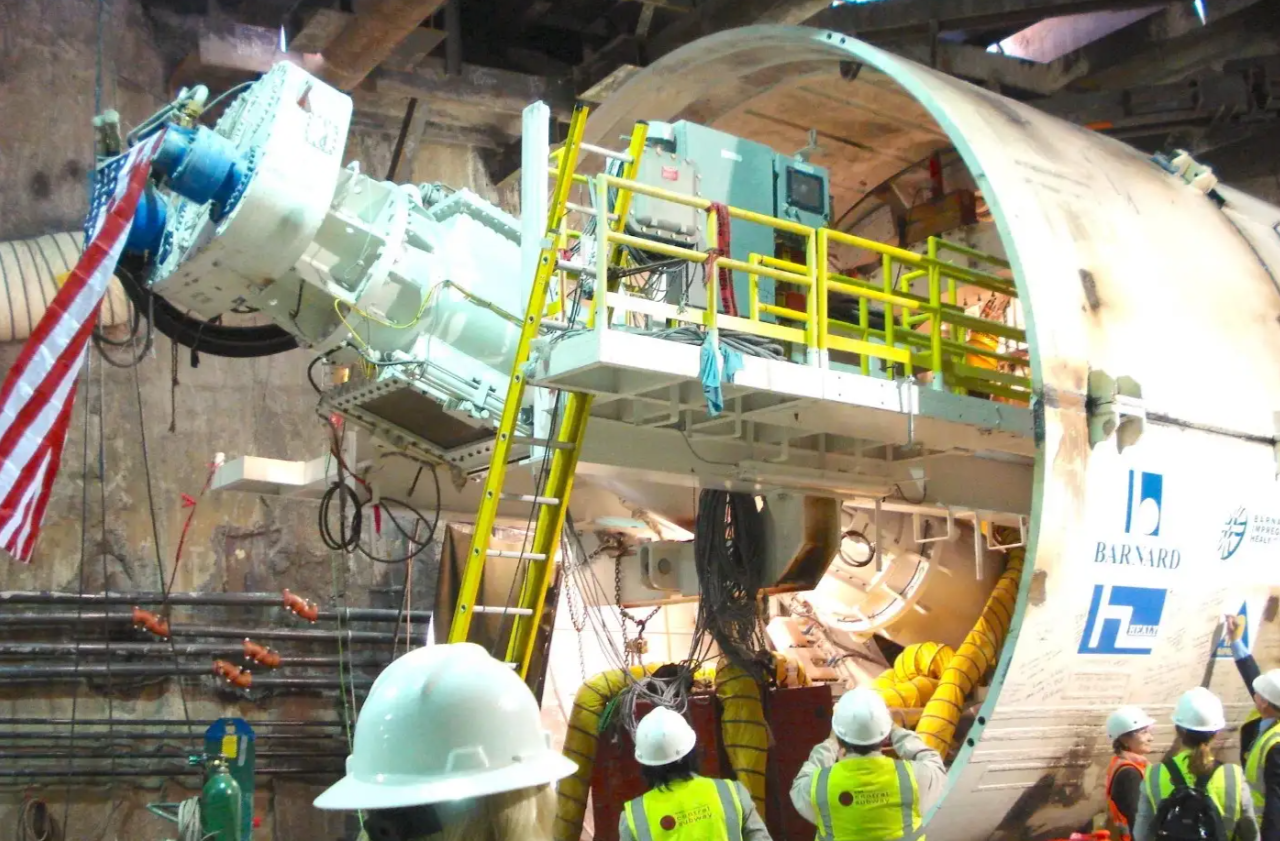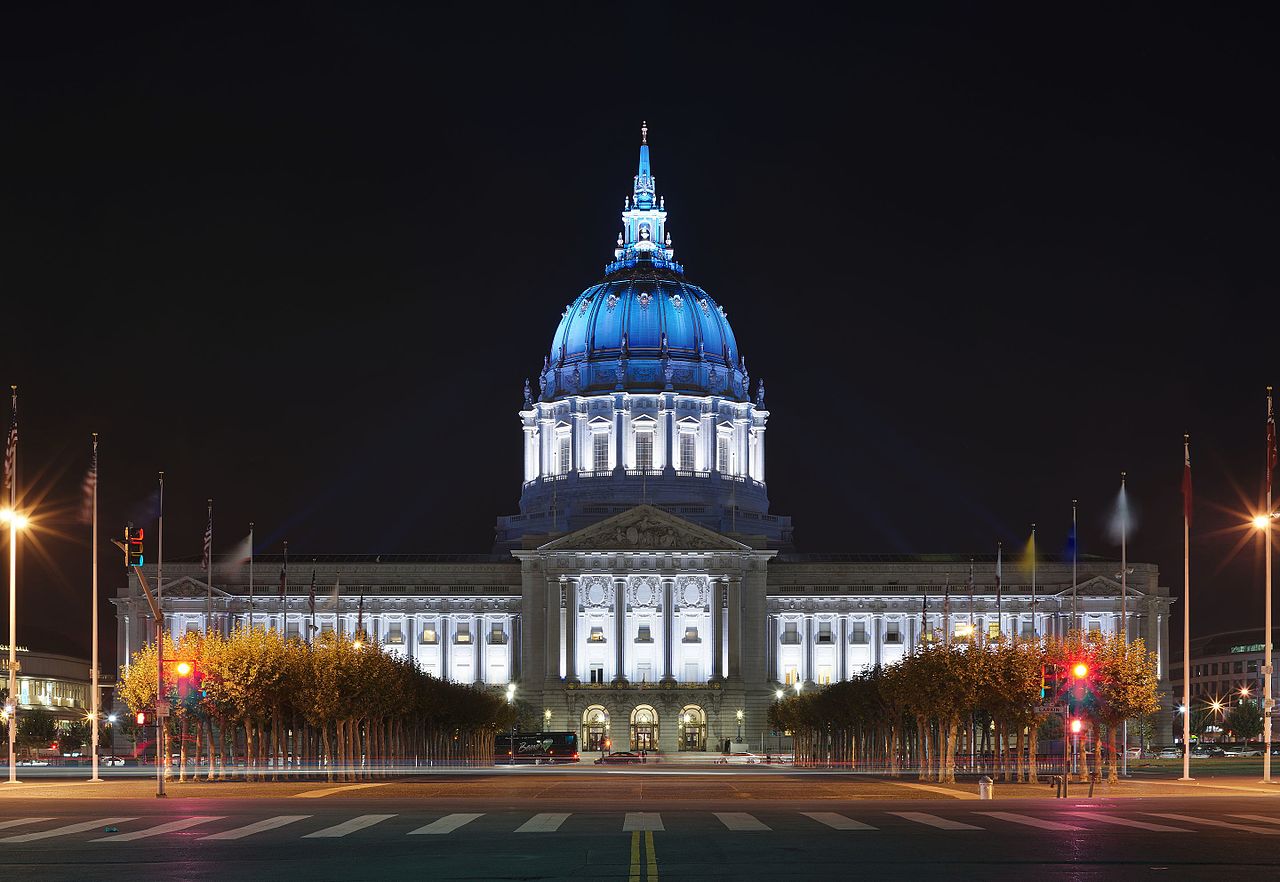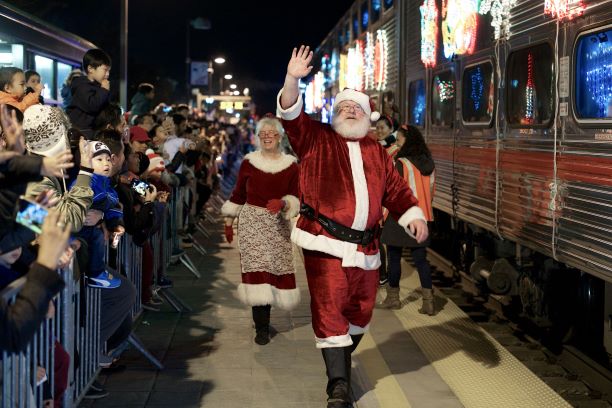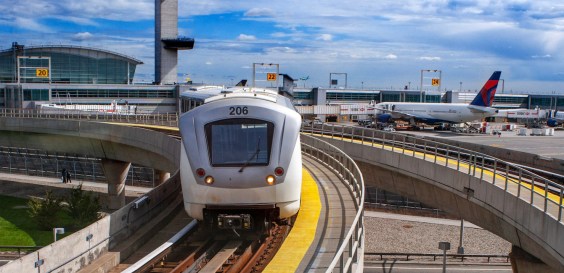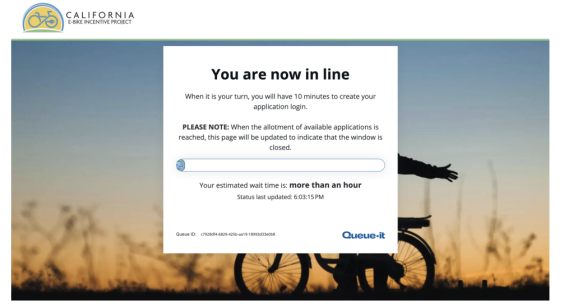This article first appeared in the Frisc and is reprinted with permission.
In the early 20th century, San Francisco billed itself as “the city that knows how.” These days we could amend that to something like “the city that knows how … eventually.”
Earlier this month, Muni finally rolled out its long, long (long) anticipated Central Subway connection, extending the T-Third line north into Chinatown, a plan whose roots stretch all the way back to the aftermath of the 1989 Loma Prieta earthquake.
In 2001, estimates for a “Caltrain to Chinatown” route envisioned a 2009 opening date and a $647 million budget. How quaint. When the 1.7-mile project finally broke ground, the budget had ballooned to $1.5 billion, and the target date was set to be 2018.
Enter the cost overruns, fights with contractors, labor shortages, flooding, and of course a global pandemic. That workers laid the wrong kind of track from King Street to Union Square didn’t help.
San Francisco’s history is full of similar mishaps. In fact, it’s rather remarkable when a public project is not mired in snafus, blown deadlines, budget crises, general outrage, and in many cases, brazen corruption and fraud.
And yet once the dust settles, projects can turn out not to be the boondoggles as first feared; indeed, much of the infrastructure we now take for granted came by way of tragic (or farcical) processes. It’s not just here, either: Boston’s Big Dig, once the mother of all U.S. infrastructure boondoggles, has clawed back into respectability. (“Boondoggle or bargain?” mused a Boston Globe writer 10 years later.)
A work in progress may be a boondoggle for years, but once it’s done, it’s done. It becomes part of the landscape and people use it.


The hiding hand
“My dad used to say this town never could do anything that wasn’t late, over budget, or slathered in graft,” says San Francisco History Association board member Judi Leff, whose father moved to SF in 1945.
You might chalk it up to the founding nature of the city, she adds: “What do you expect from folks who left danger, boredom, or lack of opportunity” elsewhere, and crossed stormy seas to seek their fortune with “sand, mud, and rats” come 1849?
San Francisco’s hydra-headed red tape process is also to blame, tacking years onto major (and sometimes minor) projects and providing cover for dirty dealings. Still, many other cities have similar trouble getting things done efficiently — and oddly enough, that may be by design.

The 1967 book Development Projects Observed by economist Albert O. Hirschman argued that boondoggles are a necessary part of expanding city infrastructure. As Hirschman saw it, if voters knew how long and costly projects like the Central Subway would really be, they probably wouldn’t approve them in the first place, and nothing new would ever get built.
Misleading estimates, rosy projections, and strategic naiveté make big builds palatable enough to gain approval, something Hirschman called the “hiding hand principle,” in which a city “takes up problems, finds out they are really more difficult than expected, but then being stuck” sees no choice other than pushing some kind of solution across the finish line.
It also remains widely true that, as SF Library archivist Tom Carey reminds us, “one person’s boondoggle is another person’s great achievement.” Or more precisely, it’s possible, even normal, for the same project to be both.
Here are some historic local boondoggles we just can’t help but love, and others that have become beloved in spite of everything.
BART: Are we there yet?
Today it’s the backbone of Bay Area transit, but leading up to BART’s 1972 debut, you could have made a strong case that it would be a rolling disaster.
California created the sprawling Bay Area transit district in 1957, covering Alameda, Contra Costa, Marin, San Francisco, and San Mateo counties. Soon Santa Clara County joined, and a phase one design ran from Marin’s Santa Venetia all the way down to Palo Alto, with East Bay service branching out to Pleasant Hill and Fremont.

The original budget was $716.5 million, with a projected debut of 1962. But Marin, San Mateo, and Santa Clara withdrew, the latter arguing the South Bay was mostly farmland and didn’t need a major transit network, thus planting the seeds of the annoying Google Bus controversy several decades early.
Shady backroom dealings with the Golden Gate Bridge District stymied Marin’s involvement, while San Mateo balked at paying taxes to ferry passengers from larger, wealthier areas. Racism and elitism likely played a role too.
Santa Clara and San Mateo eventually opted back in, but with so many destinations initially riding BART out of town on a rail, the system map still doesn’t make a lot of sense, falling well short of the earlier, grander ambitions.
Not only that, but the first trains wouldn’t run passengers until 1972, and by the time voters passed a bond to fund construction, costs had ballooned to $792 million — more than $7.6 billion in today’s dollars. Delays and overruns would demand another $150 million (nearly $1.2 billion today) over the next seven years, with the Transbay Tube alone running nearly $50 million over the limit; just one station (Ashby) cost $18 million ($143.5 million) more than originally planned.
Attorney and urban infrastructure historian Louise Dyble, who has written extensively on the Golden Gate Bridge, says this kind of urban mass transit project is almost always fraught with pitfalls, and that BART was fairly successful compared with similar projects in other major U.S. cities at the time, like Washington D.C. and Chicago.
“Transit infrastructure works the best when you put a streetcar station into a greenfield, and then everyone who owns the field makes money building housing around it,” she adds. But ”the reason BART and other projects done in already developed areas don’t get the same returns is because the development is already there.”
Even so, benefits accrue to these areas simply by staying on the map, according to Dyble. These days, while riders have many gripes about BART, it’s hard to imagine anyone looking kindly on the prospect of closing their own local station.
Center of attention
In August 2018, downtown San Francisco finally got a major transit hub worthy of the city’s high-speed rail ambitions.
Sure, it clocked in at $2.26 billion rather than the original $1.6 billion, and sure, it was supposed to have been completed in mid-2017, and sure, the planned rail connection to Los Angeles is still just a glimmer in transit nerds’ eyes, and sure, we were stuck with cringe-inducing corporate branding for years to come.

But the important thing about the new Transbay Transit Center is that it’s become a glistening new capstone on the neighborhood, completed seven years after the mercy killing of the old, thoroughly depressing Depression-era terminal. It was a rough trip, but we made it.
A month later, the whole thing had to close. We were like a kid who watches the wheels fall off a new Christmas toy right out of the box. Bad welds on a critical part of the structure kept the entire building shuttered for nearly a year. Would this be a boondoggle on top of a boondoggle, a double-bogey for the ages?
“You’d think for $2.2 billion you’d get something that was perfect,” Sup. Aaron Peskin grumbled at the time; Peskin always had complaints about the project, but this time it was hard to argue with him.
As a sort of cherry on top, there’s still the Downtown Rail Extension to build from 4th and King streets, which would let Caltrain commuter trains as well as California high-speed trains reach the new transit hub. The project will involve some two miles of construction, including 1.5 miles of tunnel, and if it were to go into service in the next decade, it could cost a whopping $5 billion. Even Robin Leach would blanch.
What you probably don’t know about the transit center is that it’s actually an acclaimed structure; architect Mark Shoemaker called it “graceful” and “cloudlike,” and it won the American Institute of Architecture jury award for “design excellence.”

More importantly, there was a danger of this neighborhood being nothing but towering tech hubs and furtive big-money condos, walled off and peering down at us little people. The center’s sprawling rooftop park allows us to feel like we’re climbing up to the tech set’s level and creates a sense that these blocks are a part of San Francisco where people can really live.

“The park itself is an amazing addition to downtown,” says Michelle Delaney, owner of 111 Minna Gallery, a block to the west. Delaney is there about twice a week, perhaps running laps, or taking work calls, perhaps just taking a breather. (The gallery has somehow made it through a plague of pandemic troubles.) She appreciates that the space is both disconnected from downtown and in the middle of it: “I feel like I’m in New York.”
One recent late Friday afternoon, she watched a group drinking not-quite-happy-hour beers and got a sense that maybe, just maybe, this could be one of the spots that pulls the city through.
Everyone is sadly familiar with the usual dance of overspending and delays on active projects, but there’s another way the public sector can screw up a potentially good thing: not investing in it at all.
Case in point, the Old Mint on Fifth Street is a slightly scary old building where it seems nobody ever has any business. You’d never know this was a national landmark and one of downtown’s most significant buildings.
Designed by the incredibly named Alfred B. Mullet in 1874, the Mint once produced 60 percent of the nation’s currency. But the new mint opened on Hermann Street in 1937, and since then nobody’s been quite sure what to do with the old one.

“The federal government sold it to the city for $1. The idea was to turn it into a museum,” said longtime SF columnist Carl Nolte. Over the decades the city has brooked many different attempts to revive the building. “No one could raise the money, so it sits empty,” he says, “too historic to demolish, too expensive to use.”
Most recently, the city has tried to market the Mint as an event space, with marginal success. The problem is the building is in terrible shape after decades of neglect, and nobody seems to want to invest the money to fix it. In 2016, the state awarded SF $1 million to rehab the building; unfortunately, a real fix would cost about 100 times that.
Perhaps a money pit would be preferable — at least that would mean work was being done. Instead, all the dithering and half-starts have left the structure in a profound state of decay, cited by the National Trust For Historic Preservation as one of the most endangered historic places in the country.
But there is one strange silver, or maybe in this case, gold lining to this sad tale. While SF has had mediocre success scaring up interest in space for 10 months out of the year, every September and October, local SF drag icon and cinephile Peaches Christ transforms the building into her Terror Vault attraction, a high-concept haunted house that takes advantage of the Mint’s derelict state.
Maybe a Halloween haunt doesn’t seem like a dignified fate for such a storied building. But as Peaches tells it, the building has been a panacea for some of SF’s creative set. “Terror Vault being housed at the Mint has allowed for the seasonal employment of over 100 Bay Area artists,” she says via email. “We’re able to really build and create at the site in a way that’s sadly rare in San Francisco.”
With so many old haunts closing — the theaters, bars, and clubs that once bred SF culture — the opportunity to keep haunting this spot keeps some of that old San Francisco spirit alive, if only once a year. Perhaps this year’s show could be called “Beware the Boondoggle.”
Digging up surprises
In hindsight, it was probably not the best timing to announce completion of the Van Ness Improvement Project on April Fool’s Day 2022.
The $316 million plan (actual cost: $346 million) to fix up the neglected Van Ness transit corridor dates back to 1995. Construction kicked off in 2016 for what SFMTA called a “three-year project” to create dedicated bus lanes and replace aging water and sewer lines. This turned out to be a bit like the SS Minnow’s three-hour tour.

A civil grand jury report notes that the contractor started digging around under Van Ness and soon realized nobody knew what was really under Van Ness. Dated and inaccurate utility maps reduced the whole affair to a guessing game, as “differing site conditions were found on virtually every block of the project,” and “almost no work could be performed.”
The report also noted that delays and overruns “damaged the public’s confidence in SFMTA to keep its promises.” This was a rather genteel way of putting it: By 2018, some merchants were calling the neverending project a “death warrant,” with business down and some longtime Van Ness ventures shutting doors for good.
Again, nobody is suggesting this is acceptable. Even by SF Public Works standards, this was a remarkable mingling of tragedy and farce, which makes it almost uncomfortable to admit that it only takes one trip on the new 49 Van Ness line to confirm that, yes, the new layout is a night-and-day improvement. Congestion is way down, and ridership is up by nearly 200,000 boardings.

The Van Ness experience is San Francisco governance distilled to its purest form: The plan took decades to get going, blew up as soon as shovels hit the ground, and even with plenty of skeptical or even cynical expectations, the process still disappointed and disillusioned almost everyone.
And yet, the city emerged with something useful, needed, and worthwhile that will serve for decades.
Know how now
Certainly SF can’t afford to keep treating malfeasance and graft as simply the cost of doing business. (We mean that pretty literally: The city has a $728 million budget deficit coming up.) That doesn’t mean the public needs to be sold a lower bill of goods. “I think voters have a more sophisticated understanding of debt” and public works these days, says Dyble the historian.
Some public projects never quite come together even when complete, perhaps because they weren’t great ideas to begin with. Conversely, really good ideas can weather almost any setback as long as they provide a needed service. If we can accomplish these things in spite of ineptitude along the way, just imagine what we could get done with a city that actually knows how.
